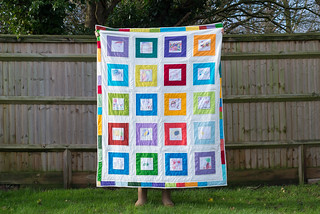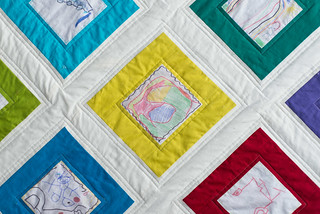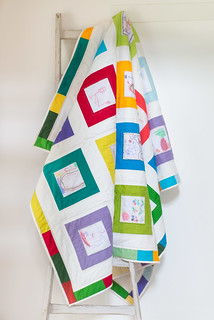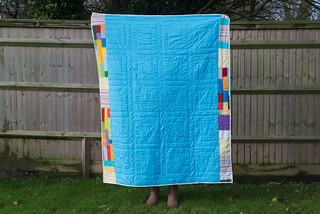Toilet Roll Holder Tutorial
This project has been lurking in the back of my mind for far too long. I’m usually pretty quick at getting things like this done once the idea is fully formed. I’ve seen a few ‘ancient’ forms of loo roll holder around the world but nothing that would suit the modern bathroom. I found myself really bothered about loo rolls hanging around different bathrooms in baskets on the floor, windowsills and such inappropriate places. So finally, much to my husband’s amusement, I sat in front of the TV set a couple of evenings ago with a loo roll, a tape measure, notepad and pen in hand. Result! Here’s what you need and what you do:
MATERIALS:
-½ metre of fabric (if you’re using the same fabric for the whole project)
or
-25cm x 110cm (long quarter) for the front and a fat quarter for the back
-½ metre of medium weight fusible interfacing (Vilene 250/305 or similar
PATTERN:
For the back, cut 2 x A (45cm x 14cm) from the main fabric and the same amount of interfacing
For the front, cut 2 x B (94cm x 12.5) from main fabric and 1 x B (94cm x 12.5cm) from interfacing
For the loop, cut 1 x C (15cm x 5cm) from main fabric
INSTRUCTIONS:
 Back: Place the fusible interfacing sticky side down on top of the wrong side of the main fabric pieces (A). Iron on as per the manufacturer’s instructions, then pin together, right sides facing. Sew together along the the long edges only, leaving a 5mm seam allowance. Leave it like that while preparing the front piece.
Back: Place the fusible interfacing sticky side down on top of the wrong side of the main fabric pieces (A). Iron on as per the manufacturer’s instructions, then pin together, right sides facing. Sew together along the the long edges only, leaving a 5mm seam allowance. Leave it like that while preparing the front piece.Front: Place the fusible interfacing sticky side down on top of the wrong side of one piece of main fabric (B) and iron on. Pin pieces B on top of one another with right sides facing then sew together the long edges only, leaving again a 5mm seam allowance. Turn it the right way out, finger press and then iron the edges flat.
To join the two pieces, feed front piece B through the back piece A. This should be easy as you’ll note B is a little narrower. Making sure to position it in the middle, pin the two short edges together then sew. Pull the front piece out and use this action to turn the back piece the right way out as well. Finger press its edges and then iron them flat.
To form the loo roll ‘pockets’, lay the pieces flat and starting from the joint between front and back, mark three lines across the back piece, measuring 13cm in between, then three lines across the front piece, measuring 30cm in between. Fold the front on top of the back matching the lines marked earlier. Sew across these points with a tight stitch.
You’ll have about 3cm on the top of the front piece left to tidy. Fold the raw edge under, pin and sew close to the folded edge.
To create the loop from piece C, fold it in half lengthwise to mark the middle. Open it up, fold the raw edges to the centre, fold in half again and pin then sew. You’ll have ended up with a 15cm strip.
Fold about 5mm of the raw edges on the back piece (A) inwards from all sides and pin the loop at the same time between, placing it 3cm in from each side.
Stitch in place close to the edge and you’ll have ended up with a perfectly formed loo roll holder.
NOTES: I've used a natural linen fabric for the back and a cotton, quilting weight fabric for the front. I kept this as simple as possible just for instruction purposes, but you can use any odd fabric and be as creative as you like. In fact, if you're a quilter and you have scraps you'd like to use, go ahead - we would love to see what others come up with.
And last but not least, I've a confession to make: I've been sewing, designing and creating for a very long time, but this is my first blog post for the Eternal Maker since I started working here. I’m more of a maker than a writer, so I hope it all makes sense and you’re happy with the results. Feedback would be wonderful. Enjoy!
Dhurata



































































